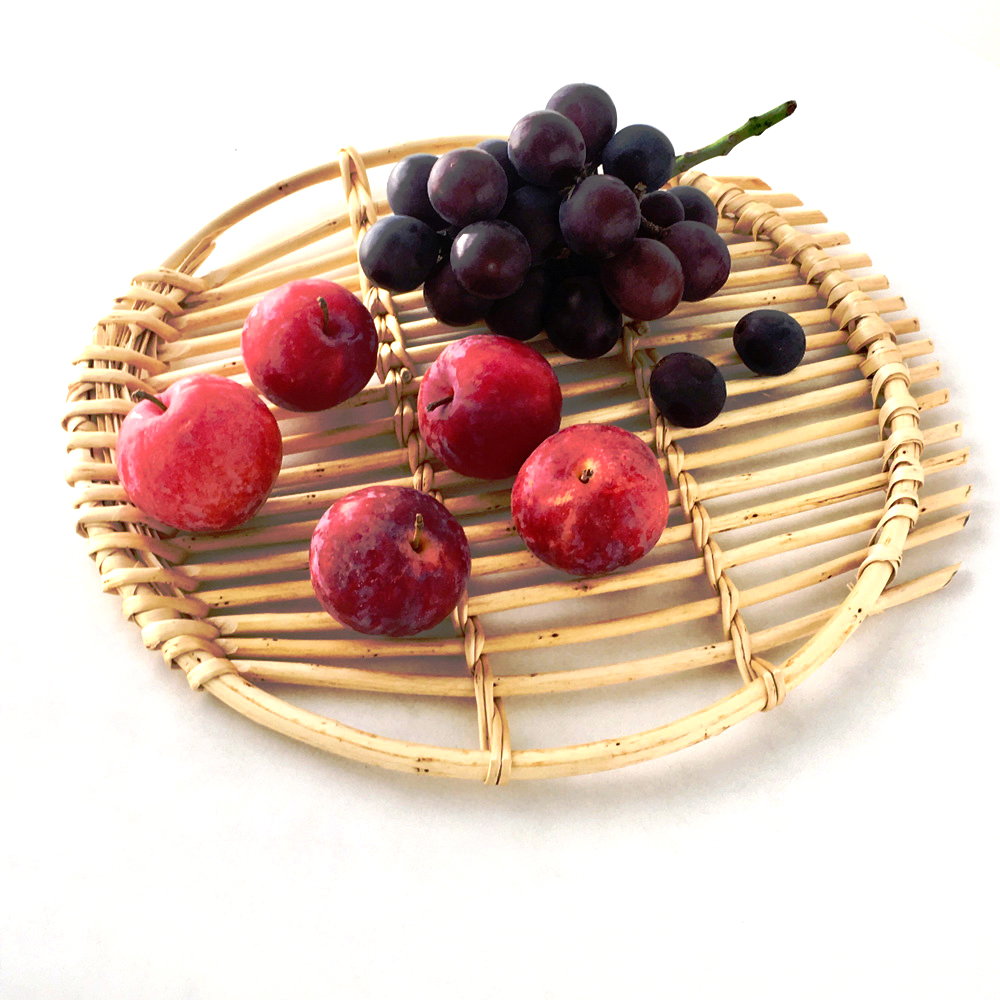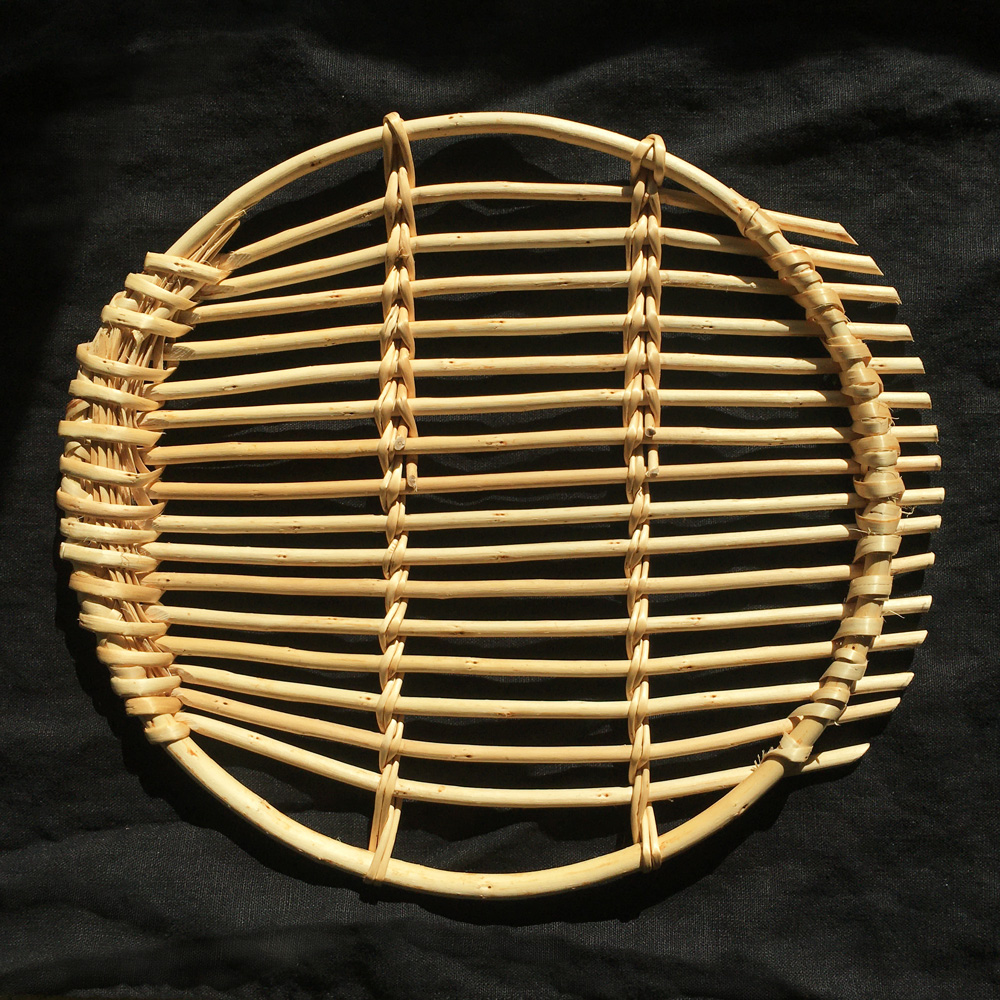#11
drying / keeping / cooking / decorating
Willow Trivet
Wind Willow Basketry
KAKANUI, Otago, New Zealand
- willow
- W35.5cm D32cm H2.5cm
the product:
This trivet is carefully hand-woven by Mike Lilian. He gently tears off the bark of willows, which he grows at the back of his house, and weaves each one of them with his special traditional tools.
This asymmetry shape is woven by the predominant weaving technique called ‘Fitching’.As the size of willow varies by weather conditions and other natural factors, he weaves each trivet by arranging the willow strains according to their thickness to achieve an overall balance. Willow is strong yet lightweight, washable and highly breathable.
The elevated side can be used as a countertop protector for hot dishes, a cooling tray for breads and biscuits just out-of-the-oven, or as a cheese platter. The reverse side can be used as a shallow tray for storing or drying vegetable and herbs. As it can be hung on a hook for storage and drying after use, you can also enjoy this beautiful and practical piece of folk art as a wall decoration.
(...)
(-)
the maker:
Wind Willow Basketry respects the history of basket weaving, the techniques, forms and functions, as well as the traditions of basketry handed down from ancestors.
Inspired by the beauty and practicality of traditional objects, Mike Lillian started to weave baskets. His work embodies “tradition" through the materials (willow), tools and methods used in the production process. Willow trees were brought to New Zealand by the settlers in the 1800s, and have been used to prevent flood damage ever since. Mike grows seven varieties of willow, which are suitable for basket weaving, in his garden.The willow trees change colour in autumn, and the harvest season begins in winter when the leaves have fallen. After the harvest, willows are stored to dry for at least six months so as to prevent them from becoming deformed after weaving. Prior to weaving, the willow is soaked in water to soften the wood and make it more supple to weave. Depending on what he is weaving, Mike uses two types of willow: barked willow, which can be enjoy for its natural colour, and white willow, which has been stripped of its bark and is smooth to the touch. His basketry come in all shapes and sizes, from hedges and coffins to small items such as baby rattles and gardening accessories.
Mike's philosophy of “holding fast to the treasures of our ancestors" is so consistent that he has changed his name from Mike Gilley to Mike Lilian, taking on the surname of his maternal grandmother, Lillian, who introduced him to the beauty of basketry as a child.
(...)
(-)




